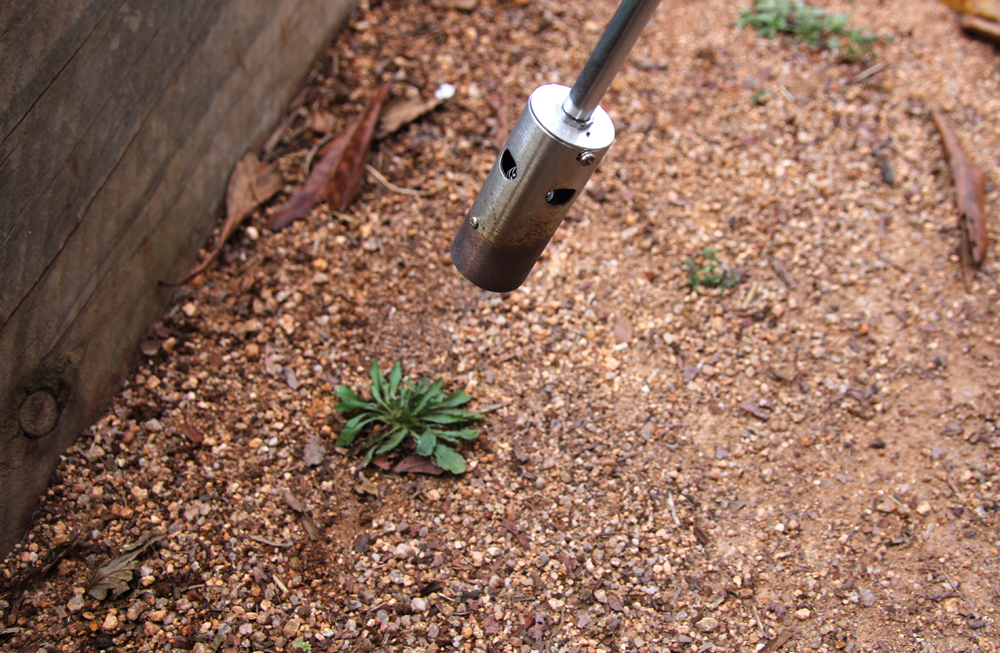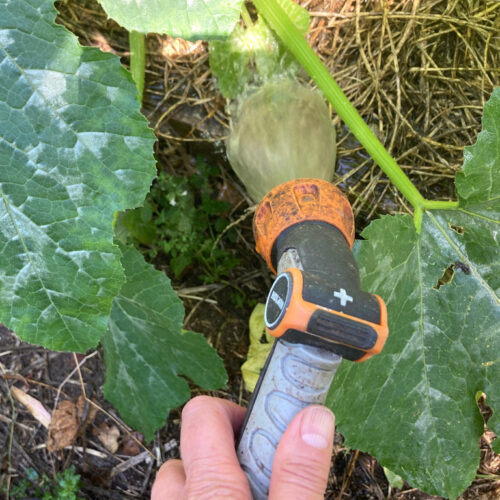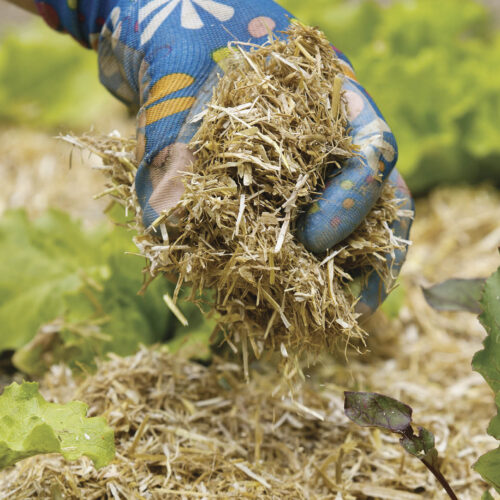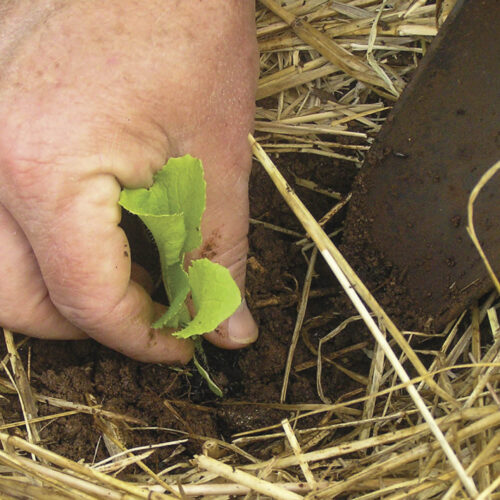Flame Weeding
2012-09-25T02:46:13+10:00
Controlling weeds is one of the major challenges facing organic gardeners. JUSTIN RUSSELL shares his his experiments with a gas powered flame weeder.
Weeds are the major bane of this organic gardener. I have few problems with pests other than fruit fly, and diseases generally aren’t much of an issue, but weeds are a constant battle. I try to manually remove as many as I can, which is very time consuming. Other techniques such as boiling water and organic herbicide work okay, but tend to be either too expensive in a large garden or too impractical. There are only so many times you can run inside to boil the kettle before the process seems ludicrous.
My latest experiment is with a flame weeder. This simple bit of gear is basically a wand that has a burner at one end, and an attachment point for a butane cylinder at the other end. A knob turns the gas on or off, and push button igniter lights it up. The weeder works by shooting a very hot flame out of the burner, causing cells within plant foliage to rapidly expand and rupture. The plant wilts instantly, and the scorched leaves die.
I’ve found it a pretty effective way to deal with weeds, especially those that are very small and tender. However flame weeding works much better on some species than others. One of my worst weeds is a tiny purple leaved spurge that self seeds very easily and loves the decomposed granite paths in my vegie garden. I’m happy to report that the flame weeder works brilliantly on it. Plants such as thistles, however, turn black after being scorched, but usually reshoot from the crown a couple of weeks later. The trick is to get them when they’re tiny and vulnerable. Chickweed, for some reason, seems very resistant to the heat and the flame has to be held in the same spot for quite a long time to be effective.
However well it works, my butane flame weeder has some obvious downsides. It’s fuelled by a non-renewable gas that produces greenhouse emissions when burnt (albeit small). More concerning for me, the butane comes in cylinders that require disposal when the gas has been consumed. I used two cylinders just doing the paths in my garden a single time, so when used regularly in a garden of any scale, butane powered flame weeders present a significant waste problem. Then there’s the risk that flame weeders will light up mulch, leaves, any dry fuel in the vicinity of the weed. In dry weather, its use poses a potential fire hazard.
What I’d really love is a domestic scale, battery powered steam weeder that I could charge with solar energy and fill with rainwater. Commercial steamers have been around for years, but as far as I’m aware, there is nothing available in Australia for home gardeners beyond plug-in machines designed to mop the floor and clean bathroom tiles. I’m half tempted to try and invent something using an old espresso machine, but I simply don’t have the time, or the mechanical nous. So until some bright spark comes up with a really nifty little steam weeding unit, it’s flame weeding in moderation, along with the use of old fashioned hand weeding.






